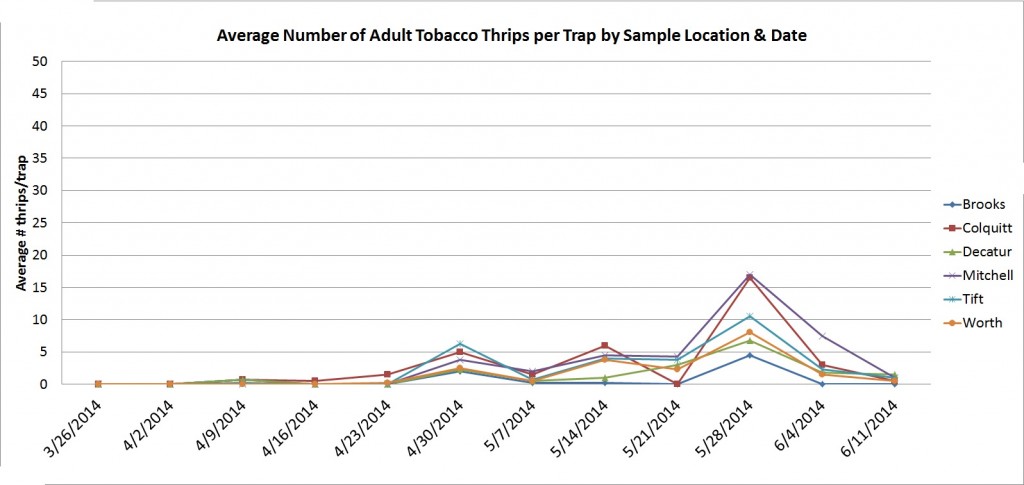Tobacco thrips dispersal dropped to nearly nothing over the past seven days indicating the end of the 4th generation flight. There are still peanut fields in the state with populations of adult and immature thrips, but I think that is more the exception rather than the norm at this point.
The pattern of thrips activity we saw in our research plots went something like this:
- Peanuts that were planted the week of 5 May came up strong and began to show some signs of minimal thrips feeding damage around 2o May.
- By 28 May, one could easily distinguish untreated peanuts from those treated with insecticides, and treatment differences were present though not dramatic.
- Large numbers of immature thrips were present on 2 June; stunting of the most severely affected treatments was obvious and treatment differences were readily apparent.
- Thrips numbers on plants were dramatically lower by 9 June, plants in most trials were growing rapidly, and newly expanded and emerging terminals had little to no thrips feeding damage.
These data are being provided for informational purposes only and may not be representative of thrips dispersal at your location. Peanut fields should be scouted regularly to quantify actual thrips populations.
If you have questions about thrips or thrips management please contact your local county Extension agent.
*See 22 April post for a map of trap locations.
